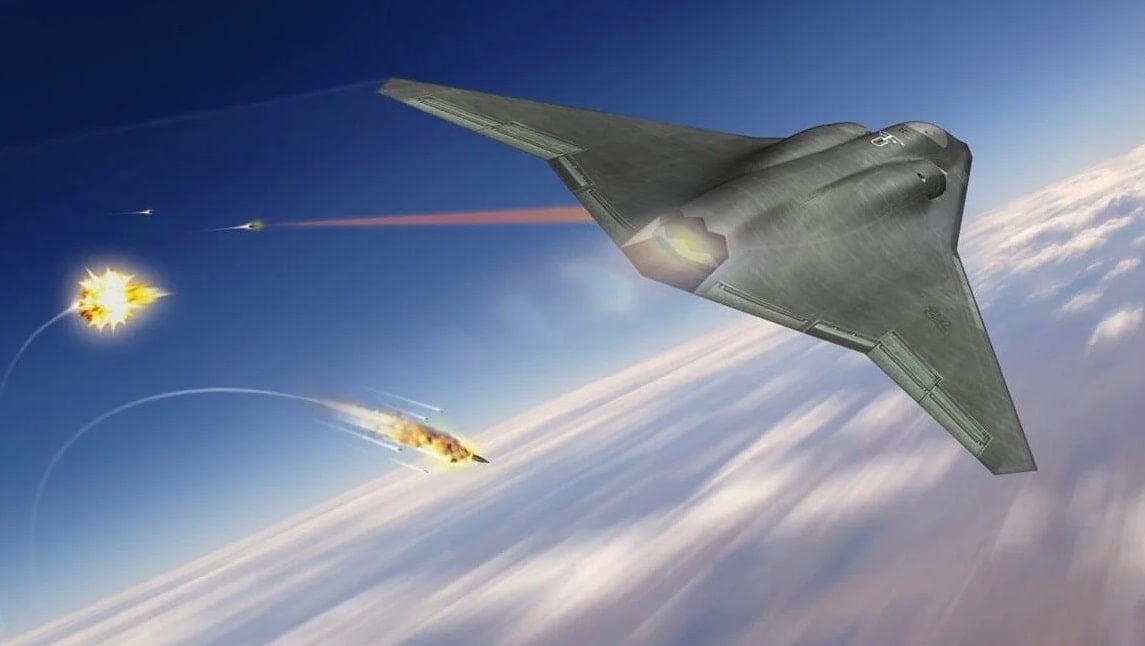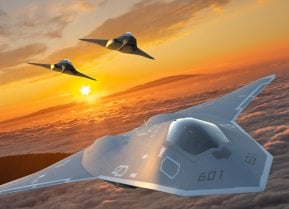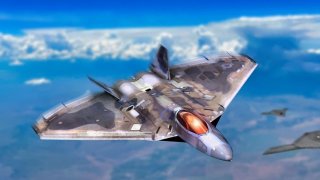Forget the F-22 and F-35: 7th Generation Fighters Could Fire Lasers
A 7th-generation aircraft will likely be autonomously controlled and perhaps directed by a human controller/operator on the ground far from the battlespace.
Yes, we are still trying to build a 6th generation fighter and master 5th generation fighters and now some are even talking about a 7th generation fighter. What would a 7th generation fighter look like? How would it fight? Would it be armed with lasers and fly at hypersonic speeds? All good questions. We went to an expert to get some answers:
Much talk is made of the current “5th generation” jet aircraft, notably the Lockheed Martin F-35 Lightning II.
It is actually the second 5th generation fighter, after the Lockheed Martin F-22 Raptor, which was developed as part of the United States Air Force’s Advanced Tactical Fighter (ATF) program that began in the 1980s. The F-22 first entered service in 2005 – sixty years after the end of the Second World War.
In fact, the “generation” designation of our modern aircraft is based on the warbirds built after that conflict.
From 1st Generation to 7th Generation
Though the designations were actually only retroactively created, the U.S. Air Force broke down the respective capabilities of the generational designations:
– 1st-Generation: Jet propulsion
– 2nd-Generation: Swept wings, range-finding radar, and infrared-guided missiles
– 3rd-Generation: Supersonic flight, pulse radar, and missiles that can engage opponents from beyond visual range
– 4th-Generation: High levels of agility, some degree of sensor fusion, pulse-doppler radar, reduced radar signature, fly-by-wire, look down/shoot down missiles, and more.
Where the issue is further complicated, is in how 4th-generation aircraft continue to be enhanced, these have been broken down into sub-generations that include four, four plus, and even four plus plus; while some of the most advanced fourth-generation aircraft even include some 5th-generation capabilities.
Taking the 5th
As noted, the development of the 5th generation has been a long-time coming – dating back to the ATF program of the 1980s. However, many of the capabilities have been greatly enhanced since.
Thus, a 5th generation aircraft is best defined as one that features stealth, low-probability-of-intercept radar (LPIR), agile airframes with supercruise performance, advanced avionics features, and highly integrated computer systems capable of networking with other elements within the battlespace for situation awareness and C3 (command, control, and communications) capabilities.
The current F-35 best exemplifies a 5th generation aircraft, and it can also be described as a flying computer as it has more software than any other air combat aircraft, with seven million lines of code in the aircraft and a further seven million lines of code in the supporting ground systems.
The F-35 is expected to remain in service through the 2070s.
The 6th Generation
Efforts are currently underway to develop the next-generation of combat aircraft, with the United States, Japan, Russia, the United Kingdom, Sweden, Italy, France, Germany, Spain, China, and India all currently involved in producing a 6th generation fighter that could enter service by the middle to late 2030s.

As these efforts are still very much in the early stages, there is no conclusive agreement on what exactly defines a sixth-generation fighter, but it is generally would include enhanced human-systems integration that could include a helmet-mounted display with a 360-degree vision, artificial intelligence (AI) enhanced battlefield awareness, advanced stealth airframes, and avionics, increased-range stand-off and beyond visual range (BVR) weapons, and advanced digital capabilities that could further feature AI, data fusion, cyber warfare, and data-to-decision (D2D) capability.
A key facet of the 6th generation would be that the aircraft could be optionally manned, and supported by autonomous drones, the so-called “loyal wingman.” Moreover, the aircraft could be equipped with directed energy weapons, including high-powered microwaves and lasers that could be used to counter incoming weapons, but which could also be employed offensively.
Seventh-Generation Fighter: On to the Next
Even as the first 6th generation aircraft is shaping up – including the United States Air Force’s Next Generation Air Dominance (NGAD) systems, and the UK-led Future Air Combat System (FACS), also known as the Tempest; there is early speculation on what can be expected following it.
Military planners must think beyond what is currently in development, which is why even back in 2016, it was reported that Russia is working on a 6th-generation and even a 7th generation fighter. The question is precisely what can be expected from a 7th generation.
As noted by past efforts, each of the generations was a major leap forward. The 1st generation of jet fighters were little more than traditional turboprop aircraft fitted with jet engines, while the 2nd generation saw the leap forward with the swept wings, radar, and missiles. The 3rd generation enabled supersonic flight and the ability to engage opponents from beyond visual range.
The 4th generation further advanced the capabilities considerably, yet it was the 5th generation that has been seen as a significant game changer with its ability to incorporate stealth capabilities yet be able to operate in the so-called “beast mode” after an adversaries air defense capabilities were neutralized. The 6th generation could be the one that provides AI-powered drones to support a manned aircraft, increasing the survivability of the pilot.
The 7th generation could further change the dynamic.
A 7th-generation aircraft will likely be autonomously controlled and perhaps directed by a human controller/operator on the ground far from the battlespace. It also is possible it could be capable of hypersonic flight and be made of materials that further enhance its stealth characteristics.
Yet, it is just as likely that air defense technologies and improved missiles could ground future fighter development. Instead, we could see drone swarms that are launched to take out air defenses to allow a bomber with standoff capabilities to strike enemy targets.
Expert Biography
Peter Suciu is a Michigan-based writer who has contributed to more than four dozen magazines, newspapers, and websites with over 3,000 published pieces over a twenty-year career in journalism. He regularly writes about military hardware, firearms history, cybersecurity, and international affairs. Peter is also a Contributing Writer for Forbes.


